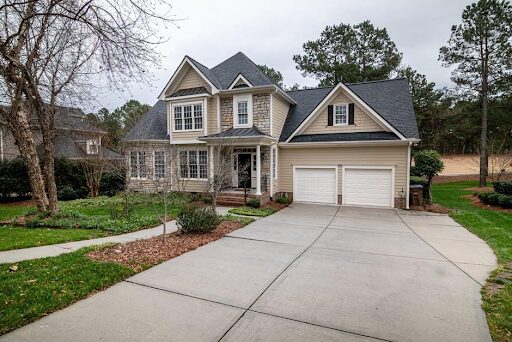It’s easy to pour concrete. Dig, mix, and pour. However, you may encounter a problem that requires you to troubleshoot it. Your ground, for example, could be damp.
For newly poured concrete, the moist ground is not the greatest base. There are a few things you can do to assist the ground dry out just enough so that you can pour your concrete.
When there is too much water on the surface of the concrete, problems arise. Concrete should never be poured into a water-filled hollow or onto a damp surface because it will absorb the moisture and deteriorate. Push any surface water off the slab’s edge when pouring concrete after heavy rain.
Table of Contents
What Are The Problems Of Pouring concrete On Wet Ground?
A damp ground will not be a concern until it cannot support the concrete’s weight. Cement cures a chemical reaction rather than drying. It absorbs water to cure, and as previously stated, some concrete applications are sprayed with water to help cure. Let’s talk about common issues regarding concrete when you pour it on wet ground;
Premature Drying
Curing is a procedure that permits concrete to gain strength. When concrete is being put up, too much water or early drying diminishes the concrete’s strength. Concrete curing necessitates more than just surface moisture; it also necessitates enough moisture throughout the concrete for cement crystals to develop around the aggregate.
Hydration happens when water reacts with the cement, causing the cement crystals to develop. When concrete is being put up, too much water or early drying diminishes the concrete’s strength.
Cracks
When too much water is available to the concrete, it begins to crack prematurely. The cracking is caused by weakened concrete. Because the moist earth provides a softer surface, the concrete settles unevenly.
The central point of concrete will remain under constant pressure if one side of the concrete is taller or lower. The pressure will eventually lead the concrete in that portion to crack and break.
Remove Water As Much As Possible From Wet Ground
If you have to lay concrete on wet ground, you can do a few things to keep the concrete from being damaged. As much water as possible should be removed from the flooded ground. Sand can work as the best base for the concrete.
You can also cover the wet ground with plastic and sand to prevent the water from penetrating the concrete’s foundation. If you don’t want the concrete to be inundated with water, use less water when mixing it.
What Would Be The Best Time To Pour Concrete?
When the weather is stable for a week, it is the perfect time to pour concrete. The soil is dry and compacted, making it an ideal foundation.
Because the temperature does not fluctuate as much within a day, it is best to pour concrete in the fall or spring. On exceptionally hot or cold days, do not pour concrete on the wet ground no matter what you do.
Steps To Pour Concrete On Wet Ground
Prepare The Ground
You can prepare the ground for concrete pouring by removing as much water as possible. You can do it with the help of a shovel and also a powerful vacuum. This method will help absorb the water and prepare the wet surface appropriately for concrete pouring.
Prepare Concrete
To pour the concrete on wet ground, you must prepare it with less water. However, the mixing pattern will remain the same for concrete.
The main reason not including too much water in concrete preparation is that ground is already wet. So, you don’t need to make a thin mixture. For wet ground, a thicker concrete mixture would be the best choice.
Pour Concrete
Once you have prepared concrete, it’s time to pour it on cleaned wet ground. Use a concrete trowel to spread the concrete all around the area appropriately. For smooth finishing, you can also dip the trowel in water. So, you can finish the lines without any inappropriate pouring and spreading.
Once you have done pouring and spreading the concrete, let it dry for at least three days before removing the concrete bars.
Conclusion
When the weather stays the same for more than a week, it is the perfect time to pour concrete. Whatever you do, do not pour concrete on wet ground, on exceptionally hot or cold days.
The curing process is aided by keeping the concrete moist. The hardening process slows or stops if too much water is lost from the concrete through evaporation. Concrete gains strength for as long as it is moist-cured after pouring, but the longer it is, the slower it gains strength.





